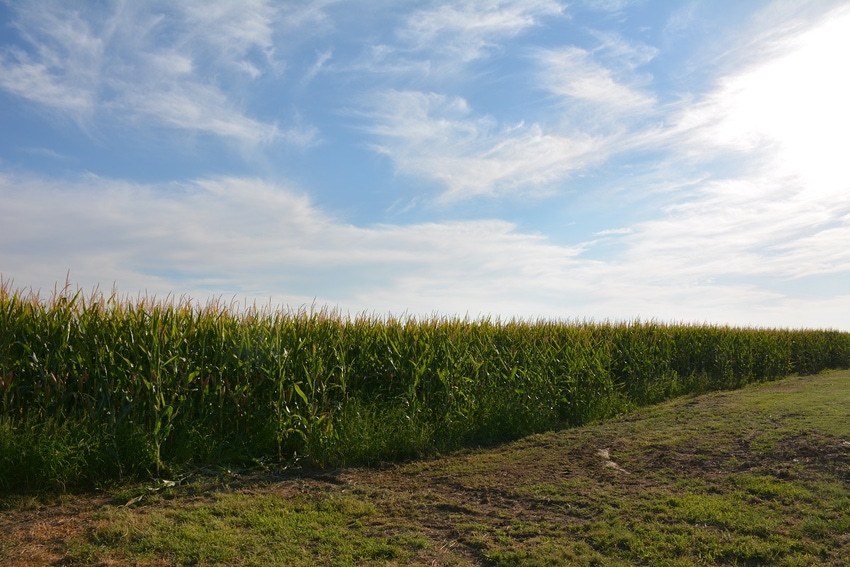
Corn farmers in many Texas counties are scratching their heads, wondering why payments received through the Agricultural Risk Coverage (ARC) County program they selected pays off in one county and not in an adjacent county with similar yield numbers and the same reference price.
David Gibson, executive director, Texas Corn Producers Board and Texas Corn Producers Association in Lubbock, is trying to find answers — and maybe a resolution. He says the numbers don’t seem to explain the wide disparity between ARC payments from similar counties.
“Some counties are showing a maximum payment of $90 to $110 per acre,” Gibson says. “In adjacent counties, payment is zero.”
For the latest on southwest agriculture, please check out Southwest Farm Press Daily and receive the latest news right to your inbox.
TCPB is working with the Texas Farm Service Agency (FSA) and other entities to determine where the differences originate. “We’re also working with U.S. Rep. Mark Thornberry’s office. We’re looking at the Risk Management Association (RMA) yield, and we’ve pulled National Agricultural Statistics Service (NASS) yields. We can’t explain the differences by looking at the numbers. We hope to get some answers.”
Gibson has also met with the FSA deputy administrator. “We continue to look at our numbers, but the discrepancies can’t be determined at this time.”
�
PAYMENT DIFFERENCES
He offers examples of the payment disparity among counties that are closely bunched. Carson County producers received $1.13 per acre. An adjacent county received $90 to $110. Nearby Deaf Smith County payment level was at zero, as was Randall County.
Gibson says those counties have similar production climates and cropping practices. “It is a challenge to figure out what’s going on, but we have folks working on it. NASS numbers are similar, and what we see doesn’t match what the payments have shown.”
He says questions from counties with small acres may be harder to figure since they have less volume to work from. RMA numbers may be a better source, he says. “These figures should be more accurate, with numbers from every farm with crop insurance. Still, we encourage corn growers to provide accurate information to the NASS surveys.”
The situation is made even worse because the agricultural economy is so bad. Farmers, he says, got caught in a squeeze with the farm bill safety net program. “In 2014, our corn crop made much better than the historical benchmark. Yields above those benchmarks knocked a lot of farms out. They made enough yield to offset price losses.”
Gibson says lenders have also expressed concern over the disparity, especially with borrowers who qualified for ARC payments in one county, but did not qualify on acreage they farmed in an adjacent county.
GRAIN SORGHUM HAPPY WITH PLC
Grain sorghum producers, on the other hand, appear satisfied with how the farm safety net worked. But most chose the Price Loss Coverage (PLC) option. “More than 66 percent of sorghum producers in the U.S. chose PLC,” says John Duff, strategic business and farm policy analysis director for the National Sorghum Producers (NSP).
“With a $3.35 market price, 60 cents under the reference price, payment projection for sorghum is $38.76 an acre,” says Jennifer Blackburn, NSP external affairs director.
Duff says the PLC option accounts for 5 million base acres across the U.S. Texas growers may have enrolled more than 66 percent of their acreage in PLC.
“Some areas to the north had benchmark yields high enough to trigger payments through ARC,” he says. “But four years of drought in the Southwest set yields too low to get any type of payment with ARC. PLC was a more attractive option for the Southwest.”
The Southwest sorghum acreage and program choice numbers show Texas with 2.9 million base acres and 94 percent PLC; New Mexico with 245,628 base acres and 97.3 percent PLC; and Oklahoma at 361,739 base and 52.5 percent PLC.
Duff says sorghum producers nationally received about $200 million from farm bill payments. “PLC pays off for the Southwest,” Blackburn says. “That $3.95 reference price was good for sorghum — it was a big win for us.”
About the Author(s)
You May Also Like






